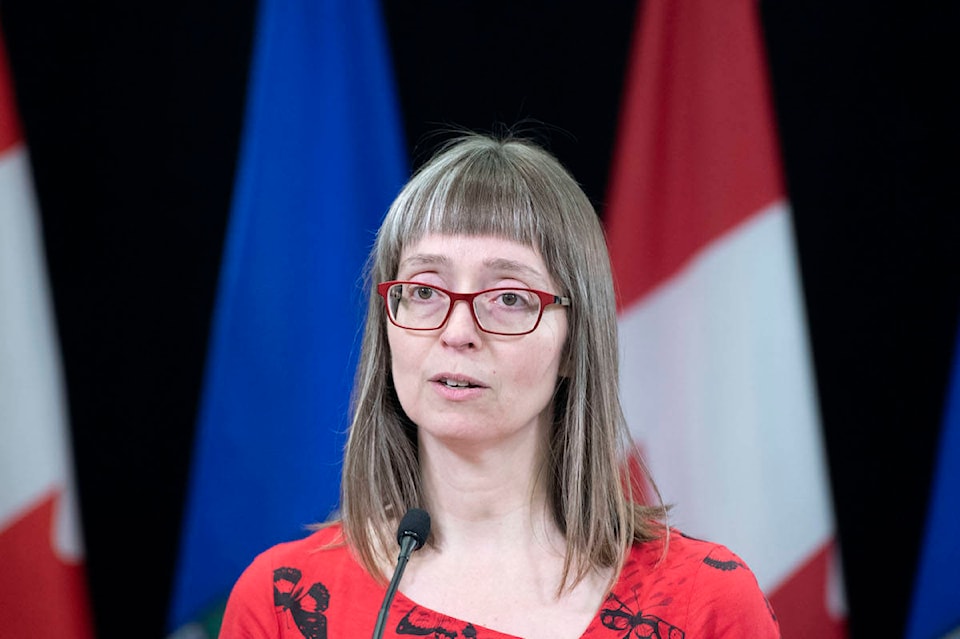Red Deer added two more active cases of COVID-19 on Monday.
The total number of cases in Red Deer was 35: five active, 30 recovered. On Sunday, the city had 34 COVID-19 cases, with three active.
Alberta confirmed 216 new COVID-19 cases Monday, bringing the provincial total to 4,696.
The central zone had 84 cases Monday, the lowest in the province.
The Calgary zone has the highest number of cases at 3,257, followed by the south zone at 643, the Edmonton zone at 484 and the north zone at 196.
The City of Lacombe remains at two recovered cases.
Lacombe County has three recovered cases.
Red Deer County has 12 cases: one active, 11 recovered.
Speaking of the seriousness of the virus, chief medical officer of health Dr. Deena Hinshaw reported two additional deaths in the province Monday, bringing the total number of COVID-19 deaths to 75.
“I do not want this number of deaths to become just one more statistic. The same is true of all those in ICU and hospital, where numbers of those needing hospital treatments has increased in the past few days,” she said.
“Infections with this virus have serious consequences for many people.
“Families are grieving those who’ve died.”
As of Monday, 87 people are hospitalized in the province, with 20 in intensive care units.
So far, 1,664 have recovered in the province.
There are 458 confirmed cases in Alberta continuing care facilities.
Over the weekend, four cases of COVID-19 in Calgary’s homeless population were confirmed, Hinshaw said.
There are about 14 confirmed cases of COVID-19 at Bearspaw First Nation, west of Calgary, officials said Monday.
All cases are isolating at home. The community has two isolation centres, one of which can accommodate up to 150 people.
“This community has an experienced emergency management team in place that managed through the 2013 southern Alberta floods,” Hinshaw said.
“This experience meant this First Nation knew how to prepare and plan for sufficient equipment, personnel and plans in place to treat those with COVID-19 and have measures in place to contain the spread.”
Hinshaw said Albertans have done a “fantastic job” of flattening the curve, and that Albertans should be proud, but asked people to be cautious going forward.
“We absolutely must ease some of the restrictions, but do it in a way that we don’t rebound, and see that modelling come true, just at a later point in time.”
mamta.lulla@reddeeradvocate.com
Like us on Facebook and follow us on Twitter
